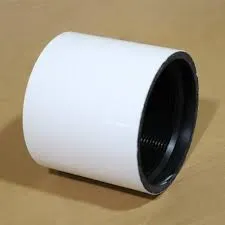- Afrikaans
- Albanian
- Amharic
- Arabic
- Armenian
- Azerbaijani
- Basque
- Belarusian
- Bengali
- Bosnian
- Bulgarian
- Catalan
- Cebuano
- Corsican
- Croatian
- Czech
- Danish
- Dutch
- English
- Esperanto
- Estonian
- Finnish
- French
- Frisian
- Galician
- Georgian
- German
- Greek
- Gujarati
- Haitian Creole
- hausa
- hawaiian
- Hebrew
- Hindi
- Miao
- Hungarian
- Icelandic
- igbo
- Indonesian
- irish
- Italian
- Japanese
- Javanese
- Kannada
- kazakh
- Khmer
- Rwandese
- Korean
- Kurdish
- Kyrgyz
- Lao
- Latin
- Latvian
- Lithuanian
- Luxembourgish
- Macedonian
- Malgashi
- Malay
- Malayalam
- Maltese
- Maori
- Marathi
- Mongolian
- Myanmar
- Nepali
- Norwegian
- Norwegian
- Occitan
- Pashto
- Persian
- Polish
- Portuguese
- Punjabi
- Romanian
- Russian
- Samoan
- Scottish Gaelic
- Serbian
- Sesotho
- Shona
- Sindhi
- Sinhala
- Slovak
- Slovenian
- Somali
- Spanish
- Sundanese
- Swahili
- Swedish
- Tagalog
- Tajik
- Tamil
- Tatar
- Telugu
- Thai
- Turkish
- Turkmen
- Ukrainian
- Urdu
- Uighur
- Uzbek
- Vietnamese
- Welsh
- Bantu
- Yiddish
- Yoruba
- Zulu
casing and tubing connections
Casing and Tubing Connections An Overview
Casing and tubing connections are fundamental components in the field of oil and gas drilling, serving as the backbone for the structural integrity and operational efficiency of wells. These connections play a critical role in maintaining the safety and productivity of exploration and production activities. Understanding the types, applications, and technologies associated with casing and tubing connections is essential for those involved in the oil and gas industry.
Casing Overview
Casing refers to the steel pipes that are installed in the wellbore to provide structural support, prevent the collapse of the wellbore, and protect groundwater from contamination. The casing is typically classified into several types, including surface casing, intermediate casing, and production casing, each serving a specific purpose during various stages of drilling and production.
Surface casing is the first layer installed, acting as a protective barrier for freshwater aquifers. Intermediate casing is used in deeper sections of the well to manage pressure and facilitate the drilling process, while production casing is installed to allow hydrocarbon recovery.
Tubing Overview
Tubing, on the other hand, refers to the pipes that run from the production zone to the surface. It is where the extracted hydrocarbons flow to the surface facilities for processing. Tubing connections must endure substantial pressures and should be leak-proof to ensure safe and efficient hydrocarbon transportation.
Types of Connections
casing and tubing connections

The connections between casing and tubing are critical for ensuring the integrity of the well
. There are several types of connections, including threaded and coupled connections, as well as welded connections.- Threaded Connections These are the most common type of connection used in casing and tubing. They involve the use of tapered threads that create a seal, preventing fluid leakage. Different standards, such as API (American Petroleum Institute) specifications, govern the design and testing of these connections.
- Coupled Connections Couplings are fittings that can connect two sections of pipe together. They are often used where there is a need for quick disassembly and reassembly, allowing for easier maintenance and replacement.
- Welded Connections While less common, welded connections provide a permanent joint that can withstand extreme pressure and temperatures. These connections are typically used in high-pressure environments where the risk of failure is significant.
Technological Advances
With the advancement of technology, casing and tubing connections have evolved to meet the increasing demands of the oil and gas industry. Innovations in materials, such as the development of corrosion-resistant alloys, and improvements in connection designs have enhanced the performance and reliability of these connections. Additionally, non-destructive testing methods, such as ultrasonic testing, ensure the integrity of connections, reducing the risk of failures during drilling and production.
Conclusion
In conclusion, casing and tubing connections are crucial elements in the design and operation of oil and gas wells. Understanding the different types of connections, their applications, and the latest technological advancements can significantly enhance operational safety and efficiency. As the industry continues to evolve, ongoing research and development in casing and tubing technologies will play a vital role in optimizing hydrocarbon recovery and ensuring environmental protection.
-
Tubing Pup Joints: Essential Components for Oil and Gas OperationsNewsJul.10,2025
-
Pup Joints: Essential Components for Reliable Drilling OperationsNewsJul.10,2025
-
Pipe Couplings: Connecting Your World EfficientlyNewsJul.10,2025
-
Mastering Oilfield Operations with Quality Tubing and CasingNewsJul.10,2025
-
High-Quality Casing Couplings for Every NeedNewsJul.10,2025
-
Boost Your Drilling Efficiency with Premium Crossover Tools & Seating NipplesNewsJul.10,2025







